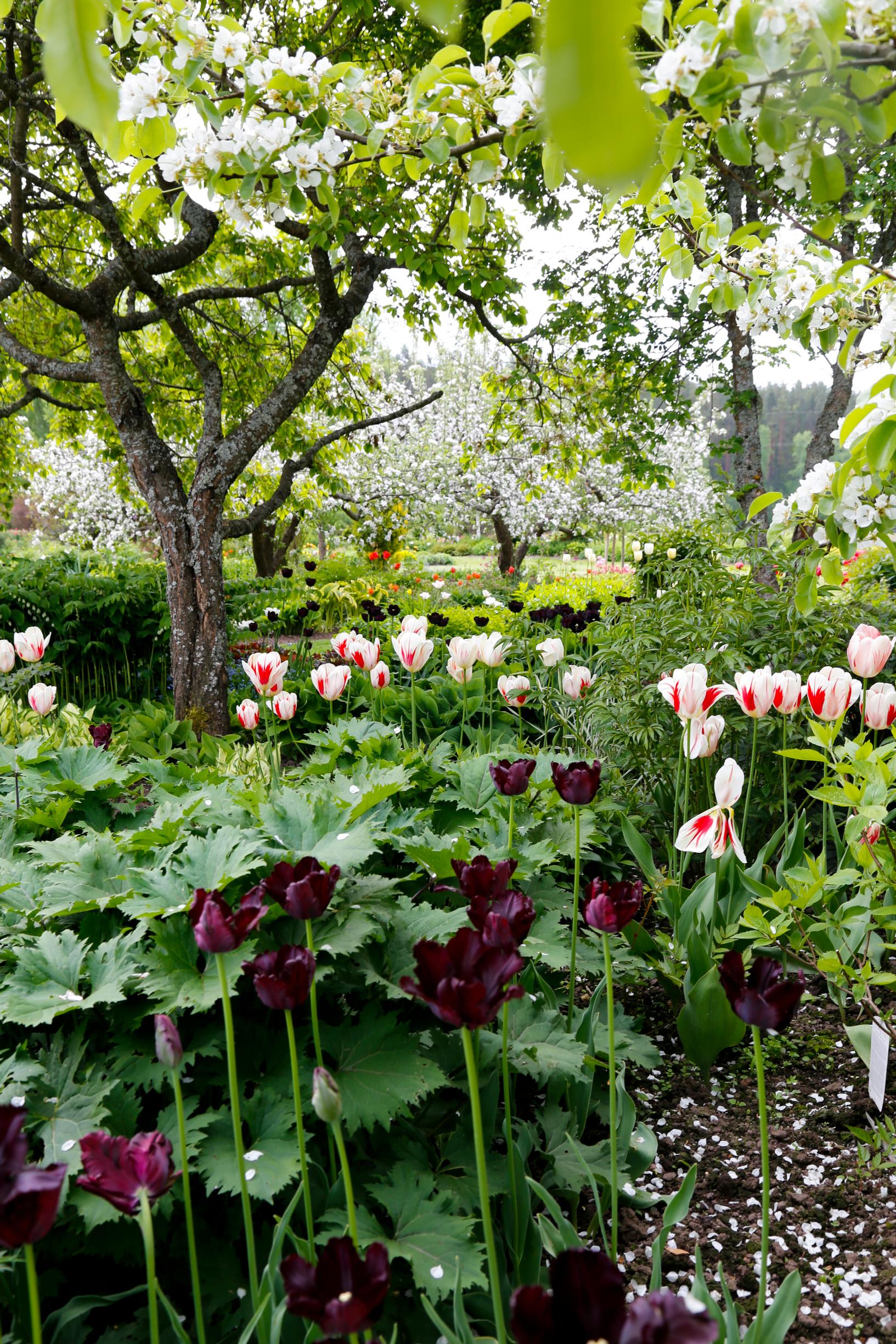
Why aren’t my tulips blooming, and should they be fertilized? 9 common questions and answers about tulips
How should bulbs be planted? Why do large-flowered tulips sometimes fail to bloom again? We answer common questions about growing tulips.
1. Where and how do I plant tulip bulbs?
Choose a sunny spot with well-draining soil. Loosen, fertilize, and lime the soil. You can either dig a single hole for a group of bulbs or plant them individually. The proper planting depth is three times the height of the bulb. For fewer side bulbs, plant the bulbs deeper. Ensure at least 10–15 centimeters of space between bulbs, placing them with the pointed end up. Water them, and cover with mulch if there’s a risk of the ground freezing after planting.
2. Moles are eating the bulbs, what should I do?
Protect tulips from moles by planting the bulbs inside a frame made from rodent mesh or using a special planting basket.
3. Should I fertilize my tulips?
A bulb that is ready for planting has all it needs for one season’s bloom without fertilization. However, if you wish to grow the same tulips for several years, the bulb needs to be strengthened during the growing season with nutrients. It also needs to be able to photosynthesize.
Begin fertilizing at the start of blooming and continue while the leaves are green. Use well-rotted compost or a fertilizer designed for bulb flowers. Remove the seed pod, but keep the stem and leaves to gather energy for the next bloom.
4. Where do large-flowered tulips disappear to?
The tulip family includes species and varieties with varying vitality levels. The most reliable garden tulips are often old Darwin hybrids, such as ‘Apeldoorn’ and ‘Golden Apeldoorn’, which can thrive for decades [in Finnish] without special care. The growing season’s weather affects them, as the soil should be moist in spring and dry in summer.
The Finnish summer is not always ideal for species from steppe regions, so mimic their natural growth rhythm. Lift the bulbs from the ground once the leaves have withered, store them in a cool, airy place over the summer, and replant them in autumn in moist and fertilized soil.


5. How can I make planting easier?
When planting individually, use tools like a planting auger or a 2–3 inch earth drill. For large quantities, it’s easier to dig one wide hole.
6. Can the bulbs be planted as early as September?
Wait until the soil has cooled properly; the optimal temperature is below 10 degrees Celsius. The bulbs need time to grow roots before winter. If there’s a risk of frost, slow down the ground’s freezing by raking leaves over the planting area.
7. My tulips bloomed last year, but now only a bunch of leaves is sprouting. What happened?
Your tulip is producing side bulbs next to the parent bulb. Lift the cluster of bulbs from the ground, separate the small bulbs, and replant them individually. It takes time for them to grow to blooming size. If you don’t want to use your flowerbed as a nursery, plant the bulbs to mature in a separate bed or at the edge of a vegetable garden.
8. How can I hide the withering leaves of tulips?
Plant perennials that emerge slightly later alongside tulips to hide the yellowing leaves, such as hostas, peonies, or bonesets.


9. Are there any easy tulips?
Try the woodland tulip, late tulip, Turkestan tulip, Tulipa praestans, and Bokhara tulips [in Finnish]. These lower-growing natural species thrive in dry spots in summer and spread on their own through side bulbs and seeds left to mature. Alternatively, treat new varieties as one-season flourishing annuals for ease.




